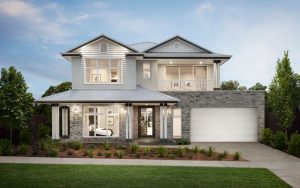How to Build a Good House
Introduction
Building a good house requires careful planning, attention to detail, and the expertise of professionals in various fields. Whether you are constructing a new house from scratch or renovating an existing one, this article will guide you through the essential steps to create a well-built and comfortable home. How to build a good house?
1. Design and Planning
Before starting the construction process, it is crucial to have a well-thought-out design and comprehensive plan in place.
1.1 Determine Your Needs and Budget
Identify your requirements and priorities for the house. Consider the number of rooms, layout, functionality, and any specific features or amenities you desire. Set a realistic budget that accounts for both construction costs and future maintenance.
1.2 Engage an Architect
Hire a qualified architect who can translate your vision into a practical design. Collaborate closely with them to ensure the design meets your needs while adhering to local building regulations and codes.
1.3 Create Detailed Construction Plans
Work with your architect to develop detailed construction plans that include accurate measurements, material specifications, electrical and plumbing layouts, and structural details. These plans will serve as a roadmap for the construction process.
2. Quality Materials and Construction
The materials and construction techniques employed significantly impact the durability, safety, and overall quality of your house.
2.1 Select High-Quality Materials
Invest in good-quality materials that are suitable for the intended purpose. This includes sturdy structural components, durable roofing materials, energy-efficient windows, and reliable electrical and plumbing systems. Choose materials that offer longevity and require minimal maintenance.
2.2 Hire Skilled Professionals
Engage experienced and skilled professionals for different aspects of the construction process, such as masons, carpenters, electricians, plumbers, and HVAC (heating, ventilation, and air conditioning) specialists. Their expertise will ensure that the construction is carried out correctly and up to code.
2.3 Regular Inspections
Perform regular inspections during the construction phase to verify that the work is being executed according to the plans and specifications. Address any issues or deviations promptly to maintain quality standards.

3. Energy Efficiency and Sustainability
Building a good house involves incorporating energy-efficient and sustainable practices to minimize environmental impact and reduce long-term operating costs.
3.1 Insulation and Energy-Efficient Systems
Install proper insulation in walls, roofs, and floors to optimize energy efficiency and maintain comfortable indoor temperatures. Incorporate energy-efficient systems and appliances, such as solar panels, LED lighting, and high-efficiency HVAC systems, to reduce energy consumption.
3.2 Water Conservation
Implement water-conserving fixtures and fittings, such as low-flow toilets and faucets, and consider installing rainwater harvesting systems for irrigation purposes. Design the landscape to minimize water usage while maintaining aesthetics.
3.3 Sustainable Building Materials and Practices
Consider using sustainable building materials, such as recycled or reclaimed wood, bamboo, or environmentally friendly alternatives to traditional construction materials. Incorporate green building practices, such as proper waste management, recycling, and the use of eco-friendly construction techniques.
4. Functional and Aesthetically Pleasing Spaces
A good house should not only be functional but also visually appealing and conducive to a comfortable living environment.
4.1 Optimize Space and Layout
Ensure that the design optimizes the use of available space and promotes a smooth flow between rooms. Consider factors such as room sizes, storage solutions, and flexible spaces that can adapt to changing needs.
4.2 Natural Lighting and Ventilation
Maximize the use of natural light by incorporating large windows, skylights, and light wells. Proper ventilation is also crucial for maintaining indoor air quality. Design the house to facilitate natural air circulation and consider installing energy-efficient mechanical ventilation systems where needed.
4.3 Interior Design and Finishes
Pay attention to interior design and finishes to create a cohesive and visually appealing atmosphere. Choose colors, textures, and materials that reflect your style and enhance the functionality of each space. Consider factors such as acoustics and lighting fixtures that complement the overall design.
5. Safety and Security
Building a good house involves prioritizing the safety and security of its occupants.
5.1 Adequate Structural Stability
Ensure that the structure of the house is stable and capable of withstanding natural disasters or severe weather conditions prevalent in your area. Engage a structural engineer to provide expertise in this regard.
5.2 Fire Safety Measures
Install fire-resistant materials and incorporate fire safety measures, such as smoke detectors, fire extinguishers, and a well-designed escape plan. Follow local fire codes and regulations to ensure maximum safety. Find out building essentials you need to know here.

5.3 Secure Entry Points
Invest in high-quality doors, windows, and locks to enhance security. Consider installing a security system, surveillance cameras, and outdoor lighting to deter potential intruders.
6. Regular Maintenance and Upkeep
To keep your house in good condition over time, regular maintenance and upkeep are essential.
6.1 Create a Maintenance Schedule
Develop a maintenance schedule that includes regular inspections, cleaning, and servicing of essential systems such as HVAC, electrical, and plumbing. Stay proactive in addressing any repairs or maintenance needs promptly.
6.2 Preserve the Exterior
Maintain the exterior of your house by regularly cleaning and repainting if necessary. Ensure that the roof, gutters, and drainage systems are in good condition to prevent water damage.
6.3 Keep Interior Spaces Clean and Functional
Regularly clean and organize the interior spaces to maintain a healthy and pleasant living environment. Address any functional issues, such as plumbing leaks or electrical malfunctions, as soon as they arise.
Conclusion
Building a good house requires careful planning, quality materials, skilled professionals, and attention to detail throughout the entire construction process. By following the steps outlined in this article, you can ensure that your house is not only structurally sound but also energy-efficient, aesthetically pleasing, and safe for you and your family.

